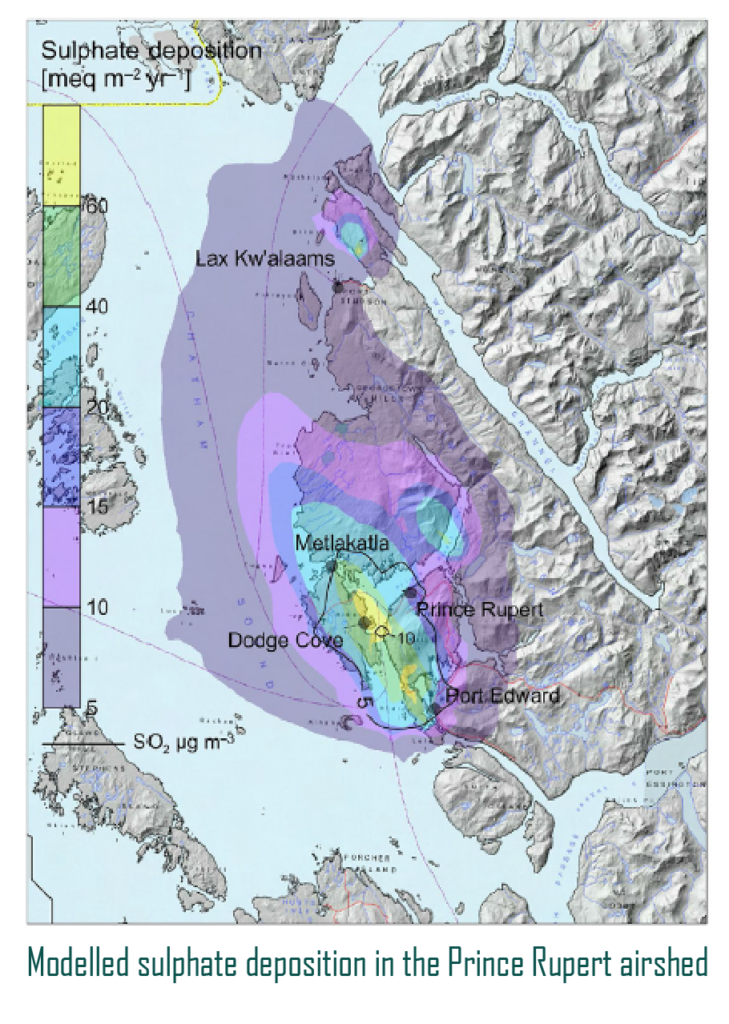New Study Reducing Uncertainty in the Regulation of Industrial Emissions in BC

 A new study has been released assessing the critical loads of industrial air emissions in a rapidly industrializing region of northwest British Columbia, based on work carried out by David Marmorek, Alex Hall, Patricia de la Cueva Bueno, and Carol Murray of ESSA along with their coauthors (Patrick Williston of the BC Ministry of Environment, Drs. Julian Aherne and Shaun Watmough of Trent University, Anna Henolson of Trinity Consultants, and Dr. John Laurence).
A new study has been released assessing the critical loads of industrial air emissions in a rapidly industrializing region of northwest British Columbia, based on work carried out by David Marmorek, Alex Hall, Patricia de la Cueva Bueno, and Carol Murray of ESSA along with their coauthors (Patrick Williston of the BC Ministry of Environment, Drs. Julian Aherne and Shaun Watmough of Trent University, Anna Henolson of Trinity Consultants, and Dr. John Laurence).
Northwest BC is a sparsely populated and largely pristine region targeted for rapid industrial growth owing to the modernization of an aluminum smelter and multiple proposed liquefied natural gas (LNG) facilities. The implications of development for air quality and potential impacts to human health, soil, water and vegetation in this region have prompted environmental concerns and highlighted the need for science-based permitting decisions.
In two studies described in this publication, the team led by ESSA used a set of linked models to assess the cumulative effects of emissions under multiple future scenarios, in both the Kitimat and Prince Rupert airsheds. We estimated the critical levels of SO2 and NO2 for vegetation, the frequency of exceedence of levels relevant to airshed management for human health, and the spatial distribution of exceedances of critical loads of acidity and nutrient nitrogen for terrestrial and aquatic ecosystems. Critical loads are thresholds sufficient to protect ecosystems based on current knowledge. These critical levels were then compared to modelled concentration and deposition estimates to identify the potential extent and magnitude of ecosystem impacts.
These approaches, combined with sensitivity analyses to explore uncertainties related to data gaps and modelling assumptions, are informing regulatory and management decisions in British Columbia and will help to prevent the potential environmental impacts of SO2 and NO2 that have been well documented in North America and Europe.
Learn more about this work by reading the full open-access article paper at Atmospheric Environment:
Williston, P., Aherne, J., Watmough, S., Marmorek, D., Hall, A., de la Cueva Bueno, P., Murray, C., Henolson, A., & Laurence, J. A. (2016). Critical levels and loads and the regulation of industrial emissions in northwest British Columbia, Canada. Atmospheric Environment, 146, 311-323.
More detailed information can be found in the technical reports prepared for the Kitimat Airshed Assessment and the Prince Rupert Airshed Study.